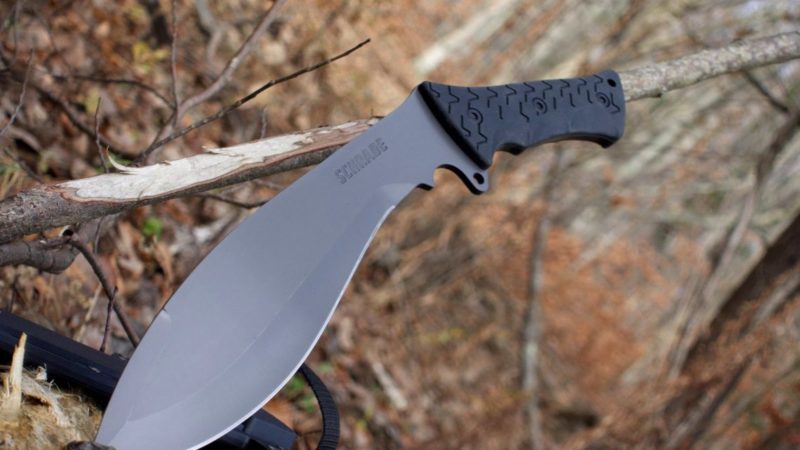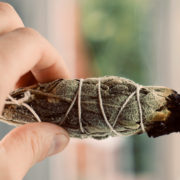When it comes to survival, there is just no substitute for being prepared. One of the biggest obstacles in survival preparation is deciding what gear to include. There is a vast amount of information available to anyone interested in learning about survival and preparation for disaster; however, a lot of this information is biased in order to sell a product. Knowing which items and tools are most important is very helpful when it comes time to begin investing in survival gear. One tool that should be included in almost any survivalist/prepper pack is a machete.
Why should a machete be a part of my survival gear?
When properly chosen and used correctly, a machete becomes a powerful survival tool with countless uses across many different types of terrain. As with most tools, a machete can be more or less useful depending on the landscape. For example, a good machete is invaluable in jungles, rain forests, and any heavily wooded area thick with brush. Adversely, in open, sparsely wooded areas, a machete may have limited use and other tools might be more appropriate. One of the key elements in preparing for a survival situation is knowing your surroundings and being able to decide what tools are most appropriate for your needs.
What are machetes used for?
A machete can hack through vines, brush, and even small trees. It can be used to clear and maintain trails, as well as to gather kindling and firewood. In addition, a machete can be used to process wild game and fish. If you are in an area where poisonous snakes or other small predators are prevalent, a machete can be used for self-defense. These are only a few of the tasks one could take care of with a well-chosen machete and the knowledge of how to use it.
What should I look for in selecting a machete?
When looking to purchase any survival tool, quality is important. There is nothing worse than being in the brush, looking for firewood or shelter materials, and having your machete crack, chip, or worst of all, break at a weak point due to a lack of quality. Several factors contribute to the quality of a machete, however, in my experience, one of the most important is the tang. Tang refers to the extension of the blade which attaches to the handle. Generally, there are two types of tang, full and partial. A machete having “partial tang” means that the metal does not extend all the way through the handle. Full tang, as the name implies, extends the entire length of the handle and is a common feature among higher quality bladed tools. The handle can be made of wood, metal or synthetic materials, each with advantages and disadvantages.
Another crucial feature is the type and hardness of the metal of the blade. The metal used to make machete blades can vary widely. As a general guideline, higher quality machetes use spring steel (not stainless) SAE rated between 1060 and 1095. 1060 spring steel has slightly less carbon than 1095, and usually, higher quality machete blades use steel with higher SAE ratings.
Blade thickness is also a factor in how well the machete will perform. However, as long as the blade is made from quality steel, thickness becomes more of a preference. Thicker blades (1/4”) generally mean heavier machetes better suited for chopping limbs or cutting kindling and firewood. Thinner blades (no less than 1/8”) are lighter and perform better in brush, vines, and other shrubbery.
Aside from the types of materials that make up a machete, there are also several different styles of machetes and each one has different intended uses and qualities that make it suitable for different tasks. Again, if the blade and handle are made of quality materials and with sound craftsmanship, the style becomes personal preference.
Machetes can be long and thin, with a pointed tip, or short and wide with a flat tip, and almost any size in between. It is common practice among survivalists and preppers alike to carry a machete that falls right in the middle. A blade 14-16” long and 1/8” to 1/4” thick will suffice for almost any task.
The last feature to consider is additional options. Many machetes are manufactured with features such as a saw pattern on the back of the blade, or a flat tip used for prying. Many machetes can also be sharpened on both sides of the blade to allow for cutting on both the back-swing and fore-swing. These additional features, however, should only be considered once the overall quality of the machete has been determined.
Start preparing, and find the machete that is right for you!
Whether or not you have any experience in survival, prepping or outdoorsmanship, there is one basic truth that can never be ignored: there is no substitute for being prepared. In order to achieve this, you must do ample research into every piece of equipment you buy. This especially applies to tools you will be using frequently. If purchased with these guidelines in mind and not settling for a less-than-quality product, your best survival machete may just become your new go-to workhorse survival tool, and I guarantee you will find new and creative uses each and every time you take it into the wild.













